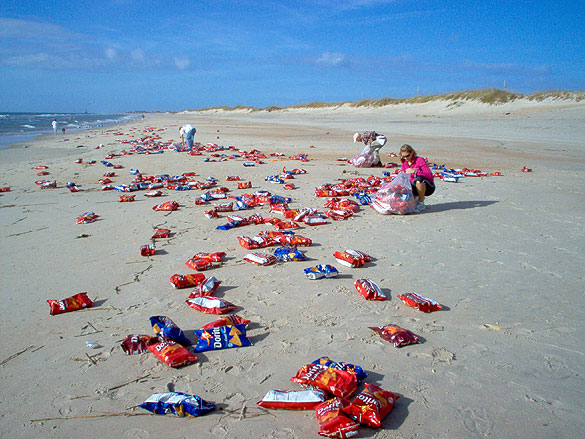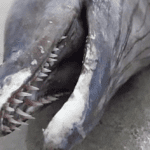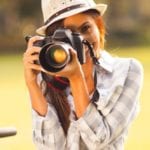 Technology
Technology  Technology
Technology  Humans
Humans 10 Everyday Human Behaviors That Are Actually Survival Instincts
 Animals
Animals 10 Animals That Humiliated and Harmed Historical Leaders
 History
History 10 Most Influential Protests in Modern History
 Creepy
Creepy 10 More Representations of Death from Myth, Legend, and Folktale
 Technology
Technology 10 Scientific Breakthroughs of 2025 That’ll Change Everything
 Our World
Our World 10 Ways Icelandic Culture Makes Other Countries Look Boring
 Misconceptions
Misconceptions 10 Common Misconceptions About the Victorian Era
 Mysteries
Mysteries 10 Strange Unexplained Mysteries of 2025
 Miscellaneous
Miscellaneous 10 of History’s Most Bell-Ringing Finishing Moves
 Technology
Technology Top 10 Everyday Tech Buzzwords That Hide a Darker Past
 Humans
Humans 10 Everyday Human Behaviors That Are Actually Survival Instincts
 Animals
Animals 10 Animals That Humiliated and Harmed Historical Leaders
Who's Behind Listverse?

Jamie Frater
Head Editor
Jamie founded Listverse due to an insatiable desire to share fascinating, obscure, and bizarre facts. He has been a guest speaker on numerous national radio and television stations and is a five time published author.
More About Us History
History 10 Most Influential Protests in Modern History
 Creepy
Creepy 10 More Representations of Death from Myth, Legend, and Folktale
 Technology
Technology 10 Scientific Breakthroughs of 2025 That’ll Change Everything
 Our World
Our World 10 Ways Icelandic Culture Makes Other Countries Look Boring
 Misconceptions
Misconceptions 10 Common Misconceptions About the Victorian Era
 Mysteries
Mysteries 10 Strange Unexplained Mysteries of 2025
 Miscellaneous
Miscellaneous 10 of History’s Most Bell-Ringing Finishing Moves
10 Bizarre Things That Washed Up On Beaches
Around ninety percent of the world’s population lives in the Northern Hemisphere, which means that most of us are currently preparing for hot summer weather and likely planning to spend some time cooling off beside the nearest body of water. So next time you’re heading to the beach, keep your eyes open for curious-looking flotsam and jetsam—as you’ll see in this list, you never know what might wash ashore:

Thousands of accidental container spills occur in the Pacific Ocean every year, as loads and loads of commercial goods make their way from Asia to the West. While this lost cargo is seriously adding to the ocean’s pollution problem, there is one silver lining: it could make you the owner of a free, slightly beat-up fly swatter.
In 2012, residents of Kodiak, Alaska, became exactly that when they eagerly gathered up sports-themed fly swatters that were washing up by the dozens onto their beach. Both professional and collegiate teams were represented—ensuring that every kind of sports fan could plaster his or her favorite team with fly guts.
At first, the Alaskans thought that the swatters were debris from the previous year’s tsunami—but it later turned out that they came from a run-of-the-mill cargo ship, which had lost several containers after a rogue wave hit the vessel.

Of all the things to fall off a cargo ship, arguably the cutest was a crate of 28,000 rubber ducks and other bath toys. They went overboard in 1992, and beachcombers all over the world are still coming across the rubber ducks today—more than twenty years later.
Many of the toys have floated ashore, but there are still thousands of them bobbling through the high seas, following the ocean’s many currents and gyres. Although most people would prefer that 28,000 pollutants hadn’t entered the ocean, the toys have had a positive side effect in that they’ve revolutionized our understanding of ocean currents. The ducks were abandoned in the middle of the Pacific Ocean while on a voyage from Hong Kong to the United States, and they’ve since shown up in far off places like South America, Australia, Hawaii, Alaska, Scotland, Newfoundland, and the Atlantic. Some are even frozen in Arctic ice.
Most notably, tracking the duck’s movements enabled oceanographers to better understand the circuit of the North Pacific Gyre, and brought attention to the “ocean garbage patch” that lies within. It’s estimated that more than two thousand ducks are drifting amid the massive amount of trash and sludge that has been caught in the gyre’s currents.

You never know what kind of flotsam you’ll discover while taking a stroll down the shore—yet even for the most experienced beachcomber, stumbling across an eight-foot-tall, one-hundred-pound Lego man is entirely unexpected. Nevertheless, versions of Ego Leonard (the Lego figure seen above) have apparently washed ashore on at least four beaches throughout the world.
The first Ego Leonard sighting was in 2007, when the colorful sculpture was retrieved from a sea near the Netherlands. The following year he was found on Brighton Beach, U.K.; in 2011 he showed up at Siesta Key Beach, Florida; and in 2012 he appeared on a beach in Los Angeles, California. Ego Leonard always has the message “No Real Than You Are” printed on his torso—adding a somewhat eerie and grammatically dubious element to an otherwise delightful fellow.

As if sharks and jellyfish weren’t bad enough, we now have yet another reason to get the heebie-jeebies when stepping into the ocean: enormous floating eyeballs.
In 2012, a softball-sized eyeball floated onto the sand in Fort Lauderdale, Florida. It was discovered by a man who kicked it about a few times before taking it home and putting it in his refrigerator. Luckily, he didn’t intend on having the peeper for lunch, and was simply trying to keep it fresh until someone from the Florida Fish and Wildlife Conservation Commission (FWC) could retrieve and identify it.
Naturally, rumors of colossal sea monsters started spreading throughout the area. Wildlife authorities quickly spoiled the fun by identifying the oversized oculus as belonging to a large swordfish (a species that can reach fourteen hundred pounds). Sohow did the eye end up on the beach? The FWC said that although it was certainly rare to find a fully intact eyeball separate from any other body parts, this one had clear, straight-line cuts around the tissue—which means that some creepy fisherman painstakingly cut out the baby blue and then tossed it overboard.

In 2007, residents of two Dutch North Sea islands must have thought they were blessed by the fruit gods when thousands of unripe bananas swept onto their shores. In reality, they came from yet another container that had fallen off a cargo ship during a storm. Crowds of banana-seekers showed up to gather the fruit, undoubtedly with visions of smoothie and bread recipes in their head. In fact, there were so many bananas littering the coastline that some suggested that they donate them to a nearby zoo.
For long-time locals of these islands, collecting strange things from the sand is nothing new. Favorable currents, strong north-westerly winds and nearby shipping routes make the islands a target for about two tons of debris per day. In years past, they’ve seen their beaches covered with aluminum briefcases, children’s toys, sweaters, and sneakers.

“Botulism poisoning” is the official cause of six thousand birds turning up dead on Wasaga Beach, Ontario, in 2011. Botulism has been on the rise in the Great Lakes; it infects fish, and is then passed onto waterfowl when they ingest the prey.
While it’s not uncommon to find individual fish and birds who were killed by toxins, the 2011 incident was especially unusual. What’s causing the increase in botulism? Scientists say that it’s a combination of gradually warming waters, increasingly oxygen-deprived conditions, and higher levels of bacteria. One theory is that invasive species, like zebra and quagga mussels, are exacerbating the problem.
Despite all the talk of toxins, authorities say that it’s still safe to swim and eat fish from the Great Lakes. Their advice is to restrict your consumption to fish that “act and look healthy”; to avoid cutting the guts when cleaning a fish; to cook it thoroughly; and to watch your dog for illness if he happens to consume a random fish lying in the sand. None of that advice sounds particularly reassuring.

If you’re walking along the shore and happen to find a Nike sneaker with the code 90 04 06, then you may have discovered one of the famed (at least for oceanographers) sixty thousand Nikes that fell from a storm-tossed ship in 1990.
Just as they were plunged into excitement by the rubber duckies, scientists have tracked these shoes for decades in an effort to learn more about the ocean’s currents. The sneakers could float for ten years—and surprisingly, they were still wearable after three years, which turned several seashores into impromptu swap-meets as people scrambled to find matching pairs of shoes.
Even more shoes have been spilled since 1990, so if you ever find yourself strapped for cash and needing a new pair of kicks, try your luck at the beach.

On second thought, you might want to think twice before picking up an abandoned shoe in the sand, as there’s a fair chance it could contain a human foot. This is especially true if you live in British Columbia or the Pacific Northwest of the United States.
Since 2007, beach goers have found at least ten shoe-clad feet in these areas—and five of them were tracked back to four apparently-deceased individuals. The identified feet are said to belong to several missing persons, a person who committed suicide, and someone who died of natural causes. Currently, no one knows to whom the other feet belong.
So where exactly are all the other appendages coming from? Authorities don’t know for sure—but they don’t expect that it’s a case of foul play. One theory has it that they are remains of those who were swept away in the Asian Tsunami of 2004. But not all the shoes discovered were from 2004 or earlier, and all the feet identified so far belonged to local people. Still, some of the shoes found were only sold in Asia—so it appears the feet are originating from more than one location.

We imagine that everyone who was in the Outer Banks of North Carolina on November 30, 2006, had the same catch of the day: Doritos. Due once again to an overturned cargo container, thousands of packages of chips littered more than a half mile of otherwise pristine beach.
This resulted in a chip free-for-all, where both humans and seagulls scavenged to get their fill of cheesy goodness. The birds gorged on the open bags, while people scrambled to gather the intact packs which, thanks to their airtight seal, were still fresh.
Some residents were a little peeved that folks seemed more concerned with getting free junk food than with cleaning up the federally-protected beach—but whether motivated by greed or public service, the chips were eventually cleared from the sand. Mission accomplished.

No list of weird things to wash ashore is complete without a mention of the Montauk Monster. This water-logged beast made its debut in 2008 on a beach in New York, and has remained the subject of controversy ever since.
Authorities could only view the creature via photographs, yet the pictures alone were enough for the East Hampton Natural Resources department and multiple zoologists to quickly peg the thing as a dead, bloated, and decomposing raccoon. While some have claimed that the Montauk Monster’s legs were too long to be those of a raccoon, zoologists have debunked that notion by explaining that raccoons are surprisingly leggy, and that their limb proportions actually match those of the “monster.” Also, what many have called a beak is actually a de-fleshed snout and exposed premaxillary bones. Furthermore, composite pictures of a raccoon body and the Montauk Monster show a perfect match.
Despite what the experts say, however, there are two major facts which continue to fuel speculation. For one, no one knows what happened to the carcass after it washed up, and only a few people have seen it in person. Apparently, someone carted it off to let it rot in their backyard—but no one’s saying who or where. Secondly, the federally owned Plum Island Animal Disease Center—which has its own fair share of conspiracy theories—is located in the vicinity of the beach where the strange animal was found. All of this makes great fodder for stories of a bizarre animal hybrid escaping Plum Island, and the government whisking away the carcass before it could be studied, bringing their dubious experiments to light.
Although that would make great fiction, the preponderance of scientific evidence suggests we’re all staring at an ordinary—albeit swollen and disgusting—raccoon.
Content and copy writer by day and list writer by night, S.Grant enjoys exploring the bizarre, unusual, and topics that hide in plain sight. Contact S.Grant at [email protected].








